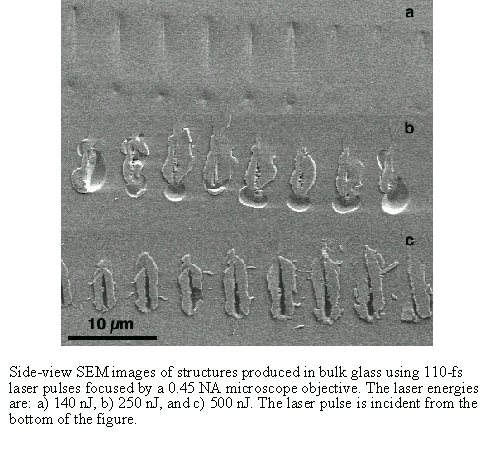Micromachining Transparent Materials
with Femtosecond Laser Pulses

In recent years, femtosecond laser pulses have proven to be an effective tool for micromachining transparent materials. In Mazur's group, three-dimensional binary data storage and the direct writing of optical waveguides have been demonstrated in bulk glass. Even with the recent progress on these applications, there still remain fundamental unanswered questions. It is still not clear what is the nature of the structural change used for this micromachining. Mazur has made significant progress on this problem. The image shows scanning electron microscope (SEM) images of femtosecond laser-induced structural changes in bulk glass. The laser energy used to produce the structural change increases from the top to the bottom. At high energy, a void is formed within the glass, indicating an explosive expansion of material was triggered by the laser pulse. At lower energy, more subtle changes are produced, consisting of small density changes within the material. Understanding the mechanisms and morphology of femtosecond laser-induced structural changes effectively "sharpens" the laser "tool bit" used for micromachining.
Eric Mazur
Harvard MRSEC (DMR-0820484)
